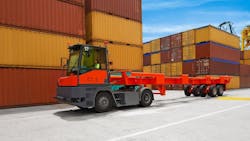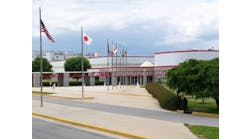Shipping delays, price increases and the impact of new tariffs are all having a big effect on the U.S. tire market, but all three hitting the industry at once is creating an especially chaotic situation in the lower tiers. Executives from Sumitomo Rubber North America Inc. (SRNA) broke down the chaos during their latest dealer forum.
Matt Leeper, vice president of four-wheel sales, says, “Tier-four is in total chaos.”
He relayed the dilemma of a regional tire wholesaler as the tire dealer was struggling to manage his inventory.
“He’s being solicited for orders from tier-four suppliers and he just wondered what to do. Some (had figured) increases into the cost, some of them had a surcharge and some of them seemed to have a price that didn’t consider any of it. But he didn’t want to order all the super cheap stuff because he didn’t think he’d get it.”
Leeper says, “That’s an illustration of how difficult it is to procure tier-fourstuff in the current environment.”
Let’s break it down into the three big looming issues: shipping, prices and tariffs. Leeper and his fellow SRNA executives covered them all.
Shipping
Ron Papcun, senior vice president of operations, says the demand for tires continues to outpace supply. And he reminds tire dealers that this same scenario is playing out in lots of consumer categories.
“Unfortunately, since the last time we had the forum, there have been no real signs of improvement in import supply so far in 2021.”
Container volume arriving in U.S. ports continues to set records, and Papcun notes the West Coast ports are setting volume records month after month. That has driven prices higher for containers and for service to carry and hold those containers.
“It’s putting pressure on the market for ocean freight and other logistics costs and they are rising fairly rapidly due to an overall lack of vessel capacity, record strong demand (and) a shortage of containers.”
The cost of moving a container on the ocean has risen to record highs.
“I think the last meeting we talked anecdotally about importers paying up to $10,000 — those numbers are now up to $15,000 to $20,000. There were articles out this week about paying $20,000 to move a container from Asia. So it’s really quite severe and it’s broad based across the supply chain.”
Papcun says the latest projections are for the shipping and container crisis to last through 2021.
Prices
SRNA has joined much of the industry in posting multiple tire price increases in 2021, announcing two increases so far for its Falken and Ohtsu brands. Other tire manufacturers have announced three, and at this point, Leeper says the company is taking a “wait-and-see approach” before it goes any further. “But we face realities. Shipping costs are way up and we do have tariff risks that we need to consider when we price our products.”
The demand for products remains great and SRNA’s backorders are growing. Leeper called them “significant and increasing pretty rapidly.”
And that pertains to its popular Falken-brand products, like the WildPeak A/T3W, as well as Ohtsu-brand tires.
“Ohtsu brand production is very constrained,” he says. The company previously put a moratorium on its container direct orders of Ohtsu tires because it knew the shipping situation would create headaches for customers.
Tariffs
SRNA has been an active participant in the current tariff investigation of tires imported from Thailand. (That investigation is happening, along with others pertaining to tires from South Korea, Taiwan and Vietnam.)
On May 24, the U.S. Department of Commerce issued its final tariff rates for imports from all four regions, giving SRNA’s parent company, Sumitomo Rubber Industries, a rate of 14.62%.The International Trade Commission (ITC) is set to make a final determination of those rates on June 23.
Rick Brennan, vice president of marketing, says, “From our point of view, there’s no chance that the ITC is going to turn around and not do it.”
Generally, the anti-dumping rates in South Korea (ranging from 14.72% to 27.05%) are similar to those set for tiremakers in Thailand (from 14.62% up to 21.09%) and 22.27% in Vietnam. But the numbers are more severe for tiremakers in Vietnam, with the range going from 20.04% to 101.84%. Plus, a single-digit countervailing duty is tacked onto the tires coming from Vietnam. In the other regions, only anti-dumping duties are in play.




